News from the lab
Further Information
Introduction to the highly charged ion experiment
Publications of the highly charged ion team
May 2023
We concluded our measurement of the 3P0 -> 3P1 fine structure transition in highly charged Ca14+ for all stable even isotopes (40, 42, 44, 46 and 48). The achieved uncertainty of around 100mHz for each isotope shift, corresponds to a relative uncertainty of 2*10^-10. Together with theory colleagues as well as experimental collaborators this measurement will be used for King plot analysis to probe 5th forces. For this, high precision mass measurements and spectroscopy data of the S->D transition in singly charged calcium will be combined with our data to put bounds on a novel fifth force coupling of electrons and neutrons.
April 2023
The last isotope for our measurement is the rare 46Ca with a natural abundance of only 0.004%. We utilized an isotopically enriched (~25%) sample of calcium carbonate which was provided by the excellence cluster Quantum Frontiers. Utilizing the knowledge of the breeding and pulse times of the neighbouring isotopes 44Ca and 48Ca we achieved the preparation of a two-ion beryllium and 46Ca14+ crystal and identified the optical transition.
January 2023
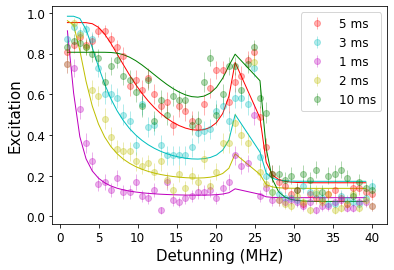
We implemented an off-resonant optical dipole force on the M1-allowed transition in Ca14+. It utilizes two counter-propagating beams detuned by the trapping frequency to excite the ions motional state depending on the common detuning to the higher lying electronic state. This way we were able to broaden the transition in Ca14+ by a factor of 100, limited by motional heating. The procedure is initial-state preserving which is advantageous in many systems. We plan to use this technique to detect narrow logic transitions in clock candidates such as Ni12+ or Cf17+.
The picture shows the detuning scans across carrier and first micromotion sideband (24 MHz) for different probe times. A broadening to more than 10 MHz for a Rabi frequency of 100 kHz is achieved.
November 2022
We implemented quantum logic spectroscopy for 40Ca14+ which allowed us to drive and the detect carrier excitation on the three Zeeman components of our HCI. Furthermore, we implemented algorithmic ground-state cooling of the weakly coupled modes as was previously demonstrated for Ar13+. This allowed us to conduct clock interrogation of the Ca14+ transition by comparing the laser frequency to light from the optical clock based on Yb+, which is provided by division 4.4 at PTB and compared on the frequency comb setup of division 4.3.
We achieved a statistical uncertainty in the 10^-16 range with a systematic uncertainty approximately an order of magnitude lower than this.
In the next step this procedure will be repeated for all other stable Ca isotopes with even mass.
November 2022
Our paper “An optical atomic clock based on a highly charged ion”detailing our recent clock operation of Ar13+ was published in Nature! This includes measurements of the transition frequencies of 36Ar13+ and 40Ar13+, along with their isotope shifts, g-factors and quadrupole moments. The achieved systematic uncertainty of 2.2*10^-17 demonstrates that highly charged ion based clocks are feasible. This paves the way for novel atomic clocks. By working with our theory colleagues from FPM at PTB, theoretical predictions of the isotope shift are improved by a factor of 3 and allow to resolve the quantum electrodynamic nuclear recoil in a multi electron system for the first time. You can see it at the following link: https://www.nature.com/articles/s41586-022-05245-4 or at https://arxiv.org/abs/2205.13053.
July 2022
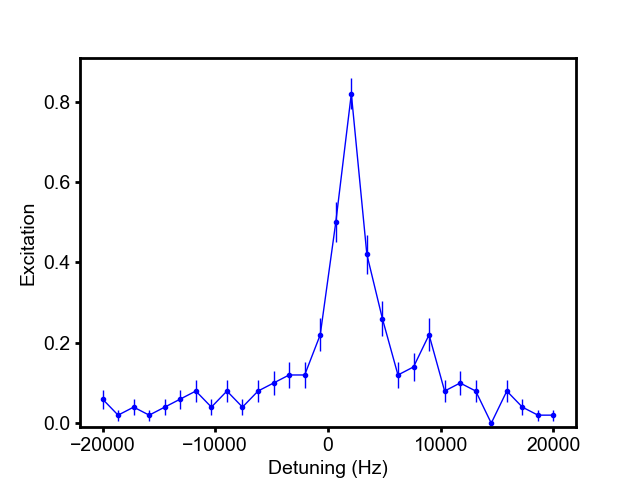
Like our previous work with highly charged argon, we conducted the first coherent laser excitation of the 3P0->3P1 transition in Ca14+. By driving a blue sideband transition on the calcium, we created a phonon of motional excitation which is read out on the co-trapped beryllium ion. We identified the three Zeeman components of the fine structure transition in 42Ca and were able to reproduce this result also for the more abundant 40Ca.
The picture shows a scan across the detuning of the blue sideband pulse.
June 2022
Using our newly installed ablation source we produced highly charged calcium in our electron beam ion trap. We isolated our desired charge state and slowed it down to allow re-capture in a laser cooled beryllium cloud in our cryogenic Paul trap. We worked with the isotope 42Ca to unambiguously identify the HCIs charge and mass based on its motional frequency. This way we were able to differentiate it from ions produced from residual gas.
November 2021
We have finished our clock spectroscopy of highly charged Ar13+ where we stabilise our clock laser to the atomic transition. This is compared to the well-known transition frequency of the Yb+ E3 clock transition measured by division 4.4 with an achieved statistical uncertainty of the frequency ratio of 10^-16. This comparison is made possible with the help of division 4.3. The derived absolute frequency improves on previous measurements by 8 orders of magnitude. The measurement of both 36Ar and 40Ar allows tests of fundamental physics and is the most precise measurement of an isotope shift in a HCI system by 9 orders of magnitude.
August 2021
A comprehensive analysis of all systematic uncertainties is critical in order to evaluate the performance of optical clocks. We have now finished the evaluation of all our systematic shifts including time dilation shifts induced by the motion of the ion and the AC Zeeman shift induced by the probe laser itself. The total fractional systematic uncertainty is limited to a few parts in 10^17 by the uncompensatable excess micromotion in our first-generation ion trap. This level of total uncertainty is comparable to many other optical clocks. The uncertainties on all of the other major shifts are at or below the 10^-18 level, and improvement of the trap design could allow us to reach much lower levels of total uncertainty. In the next step we will perform an absolute frequency measurement by comparing to the well-known octupole transition in Yb+, which is provided by division 4.4 at PTB.
March 2021

In close collaboration with the group of José Crespo at the Max-Planck-Institut für Kernphysik in Heidelberg, we have built an ablation source for injection of elements from a solid-state target into our electron beam ion trap (EBIT). It was built and tested in Heidelberg where injection of calcium has been observed by measuring characteristic XUV transitions. This will allow us to produce isotopically enriched, highly charged calcium which we want to use in the future for isotope shift measurements.
February 2021
We have succeeded in ground-state cooling of the weakly-coupled radial modes of the HCI! By a sequence of sideband pulses similar to quantum logic, we can transfer heat from the radial to the axial direction where it can be dissipated. Through this we have achieved a temperature T<200 µK for each mode, the lowest temperature ever achieved for a HCI. This was the last remaining obstacle for building an optical clock based on HCI. You can find the preprint of our results at arxiv.org/abs/2102.12427.
September 2020
The HCI's motion in the radial direction of the trap is essentially decoupled from the Be+ ion owing to the large difference in their charge-to-mass ratios. This impedes sympathetic cooling using the Be+ ion, but to what level? We are using the new high-power probe laser to perform direct quantum logic-enabled spectroscopy on the radial modes of the HCI, thereby allowing us to determine their temperature and search for optimised cooling strategies. Lower temperatures lead to less relativistic time dilation, and hence a higher final accuracy of our clock.
July 2020
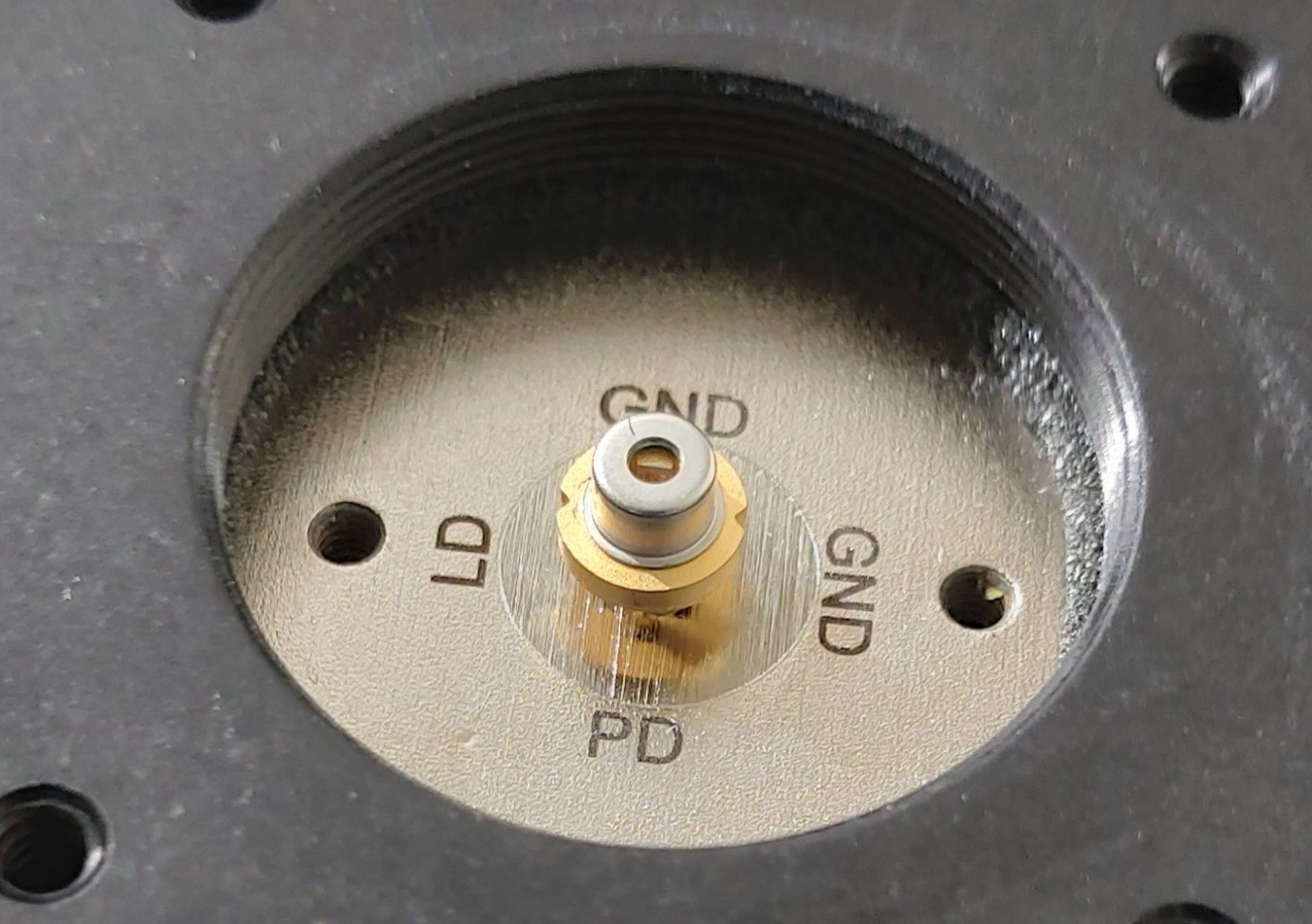
To increase the optical power available to us at the ion trap, we have injection-locked a high-power 441 nm laser diode using our original, low-power spectroscopy laser. The initial results are promising, we can drive the clock transition with much shorter pulses than were previously possible, thereby reducing the dead time in our experimental cycle.
July 2020
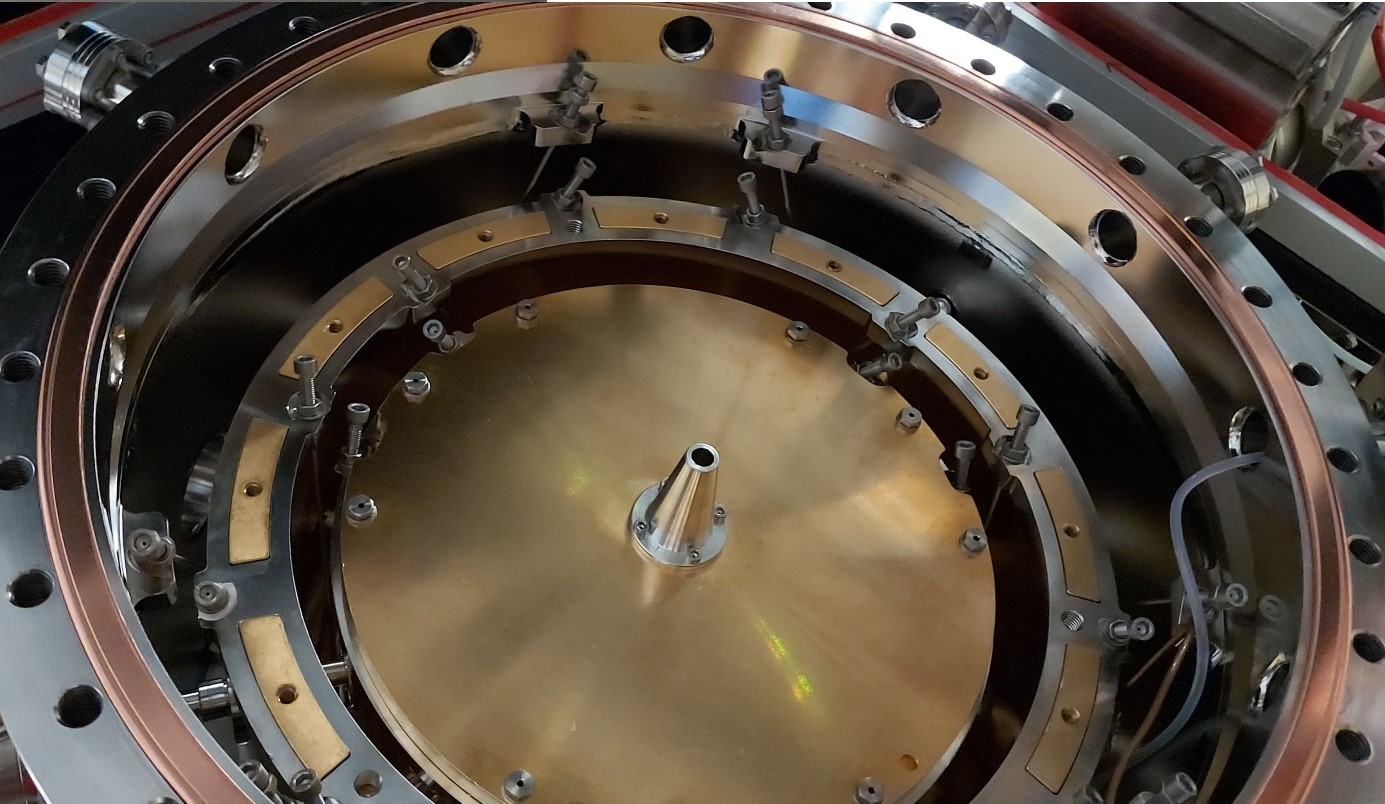
We have performed an upgrade to our cryogenic system – by installing optical windows in the inner heatshield, we will block the flow of gas from our room-temperature vacuum region into the cryogenic region where the highly charged ion is held whilst still allowing good access for the laser beams. By doing this, we hope to increase the storage times of our HCI even further by reducing the rate at which charge-exchange collisions occur.
January 2020

Our paper detailing our recent quantum logic spectroscopy measurements was published in Nature! This includes measurements of the lifetime of the excited state, along with its g-factor. Our resolution on the transition frequency is eight order of magnitude higher than previous state-of-the-art systems. You can see it at the following link: https://www.nature.com/articles/s41586-020-1959-8
November 2019
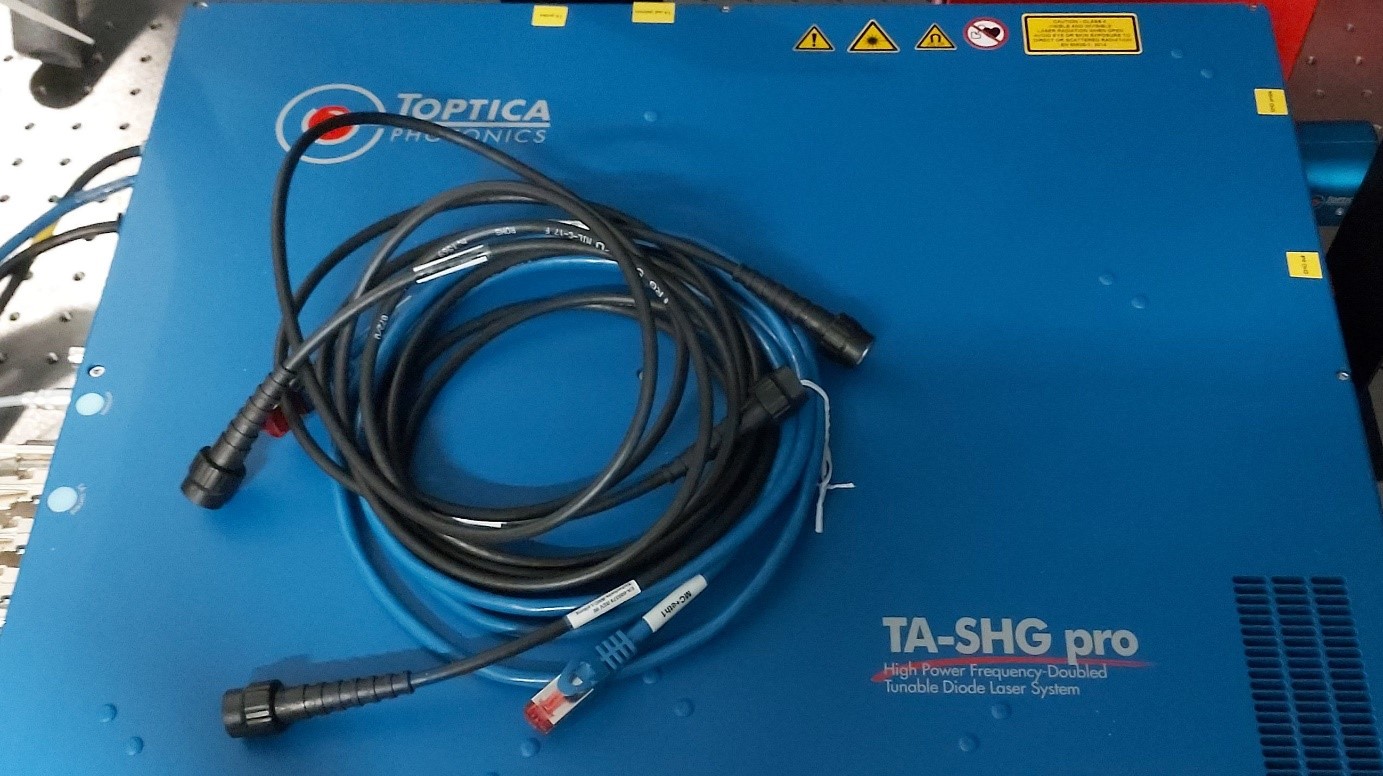
Our new spectroscopy laser for Ca14+ has arrived! The laser is capable of producing several watts of light at 569 nm, ideal for performing fast quantum logic operations.
October 2019
Our Artiq / Sinara system has arrived! We will be switching from our previous experimental control system over the coming weeks, as our experimental cycle is now far too complex for it to handle.
July 2019

Our paper about our cryogenic ion trap was published in Review of Scientific Instruments, and was selected as the cover article! You can find it at the following link: https://aip.scitation.org/doi/full/10.1063/1.5088593
June 2019

Our paper about our low-vibration cryostat was published in Review of Scientific Instruments! You can find it at the following link: https://aip.scitation.org/doi/full/10.1063/1.5088593
February 2019
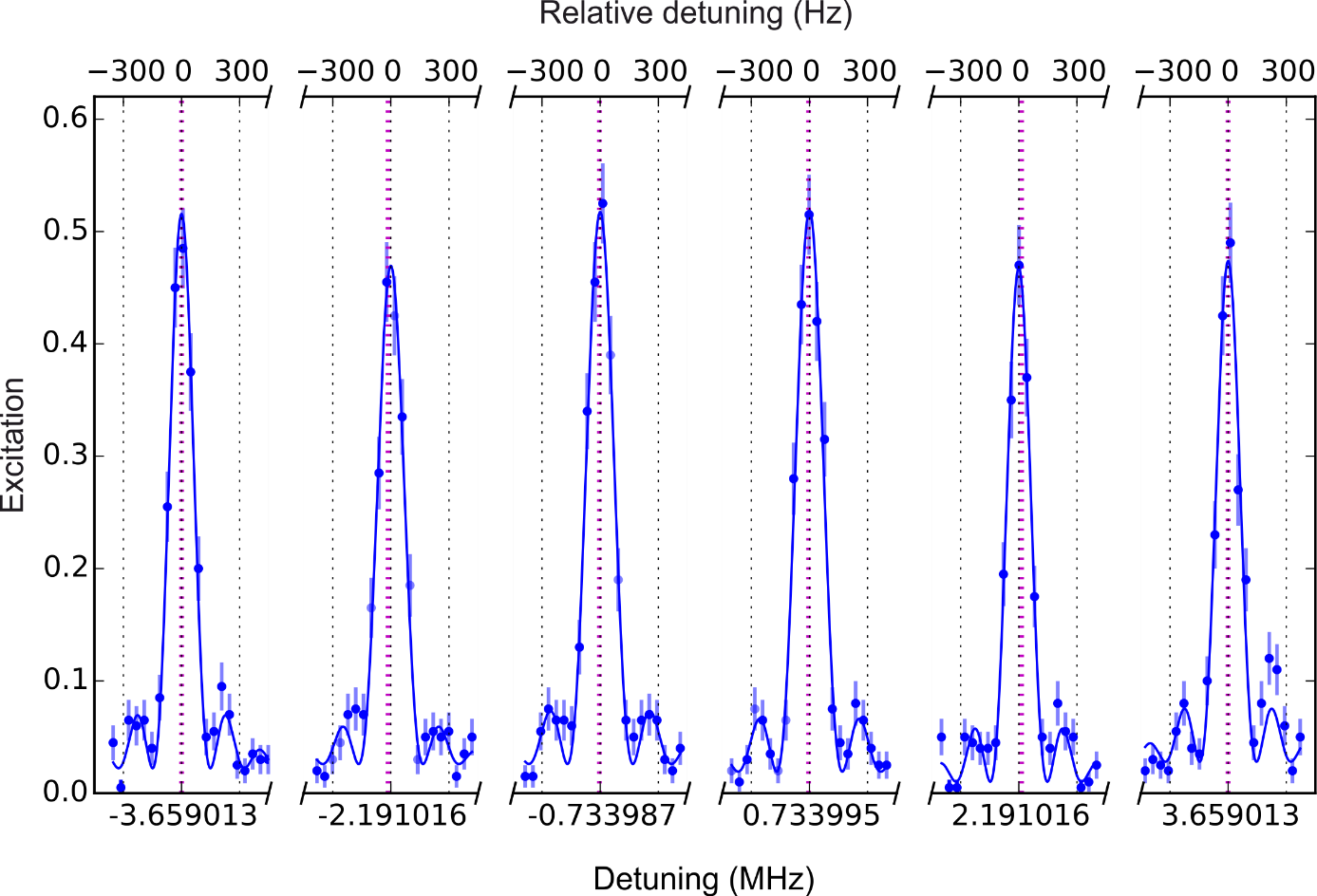
To allow driving of all possible transitions in the HCI, we must deterministically prepare one of the two ground states before clock interrogation. If the ion is in the wrong ground state, the transition we are attempting to drive cannot be observed. Because of the lack of a fast cycling transition in the HCI, we use a variation of the quantum logic technique to “optically pump” the HCI to the desired ground state. By doing this, we are able to excite all six possible transitions on-demand (three from each of the two ground states).
November 2018

We have now been able to observe transitions in the HCI that do not change the motional state of the ion crystal. This is possible using the full quantum logic spectroscopy routine – the transition is driven with a probe pulse, followed by a second pulse that is tuned to the first red sideband of the transition. The ion crystal will then gain a quantum of motion if (and only if) the first “clock” pulse was successful.
October 2018
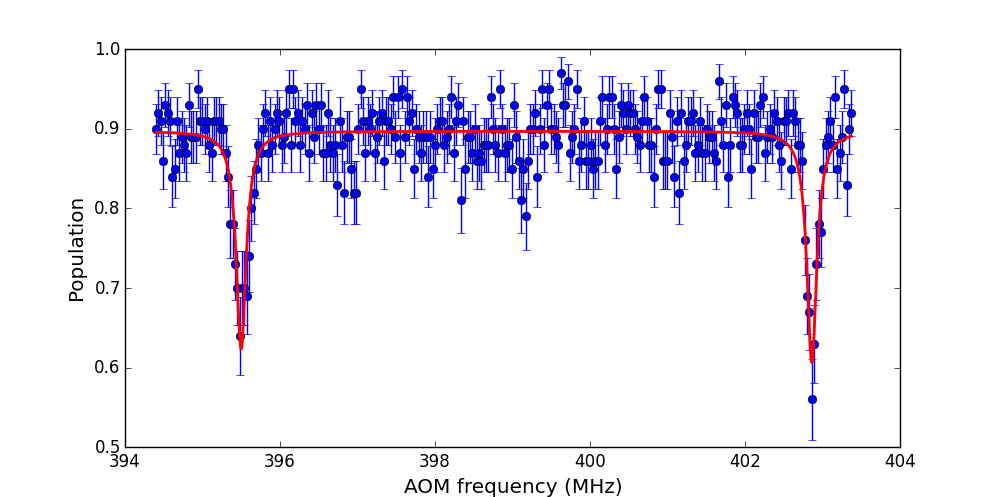
We found the clock transition in Ar13+! The transition was observed by cooling the two-ion crystal to the ground state of motion, and then tuning the 441 nm spectroscopy laser across the approximate frequency range where the transition was expected to be. When the laser is resonant with the blue sideband of the clock transition, the two-ion crystal collectively gains one quantum of motion. This can be efficiently detected on the Be+ ion. Now we must implement full quantum logic spectroscopy to be able to observe transitions that do not change the motional state, which is essential for high-accuracy clock operation.
October 2018

Our paper about our compact DBR-based repumper laser for Be+ was published in Applied Physics B! You can find it at the following link: https://link.springer.com/article/10.1007/s00340-018-7080-0
October 2018
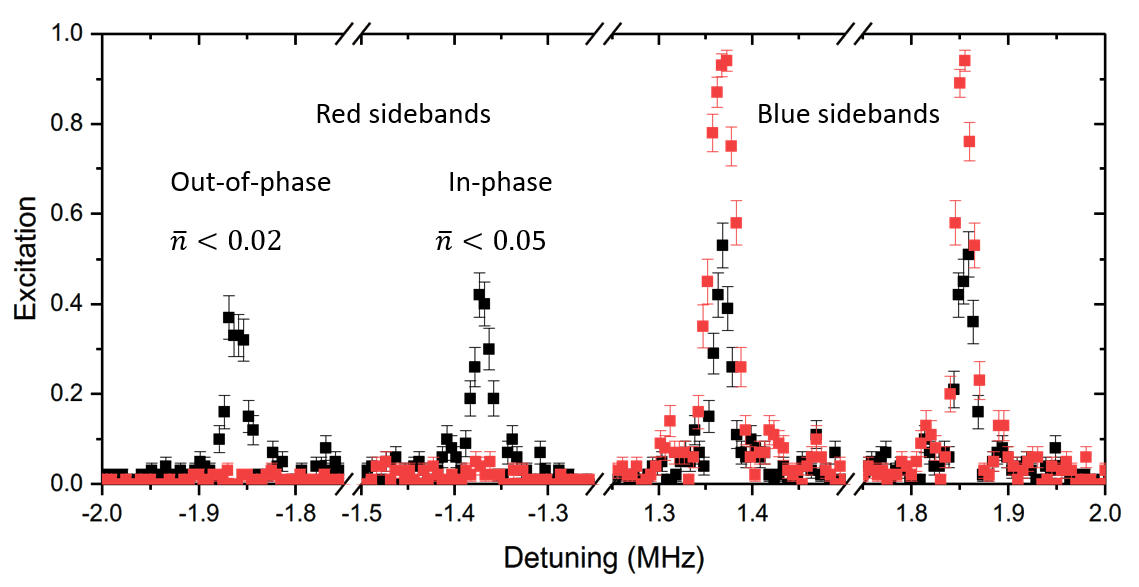
We have successfully cooled a two-ion crystal composed of a single Be+ ion and a single Ar13+ ion to the ground state of both of its axial motional modes simultaneously, making this the coldest HCI ever produced in a laboratory with an equivalent temperature of around 100 µK in these modes. The cold temperature is observed by the elimination of red sidebands on the stimulated Raman transitions driven in the Be+ ion, shown above. We are now at the perfect starting place for quantum logic spectroscopy, and the search for the clock transition can begin!
August 2018
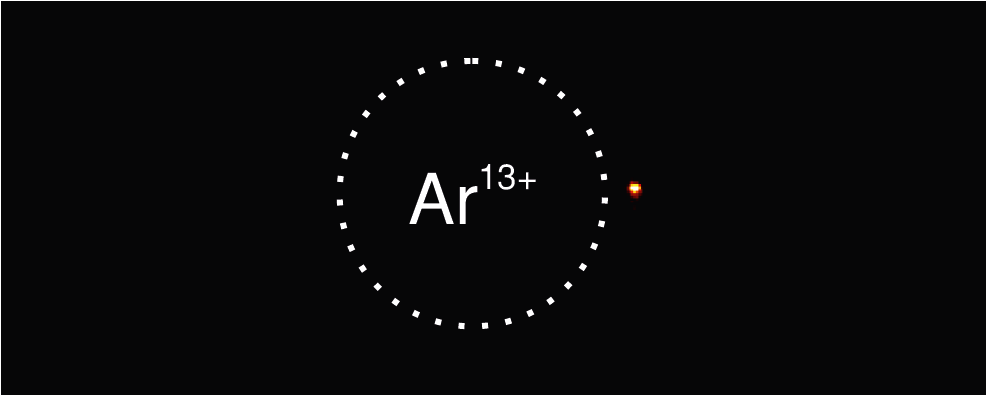
We can now reliably produce our desired two-ion crystal of a single Be+ ion and a single Ar13+ ion. After implantation of the Ar13+ into a large Coulomb crystal, we selectively remove excess Be+ ions until only our target crystal remains. Despite the complexity, the process is very reliable and takes only a few minutes.We can now reliably produce our desired two-ion crystal of a single Be+ ion and a single Ar13+ ion. After implantation of the Ar13+ into a large Coulomb crystal, we selectively remove excess Be+ ions until only our target crystal remains. Despite the complexity, the process is very reliable and takes only a few minutes.
July 2018
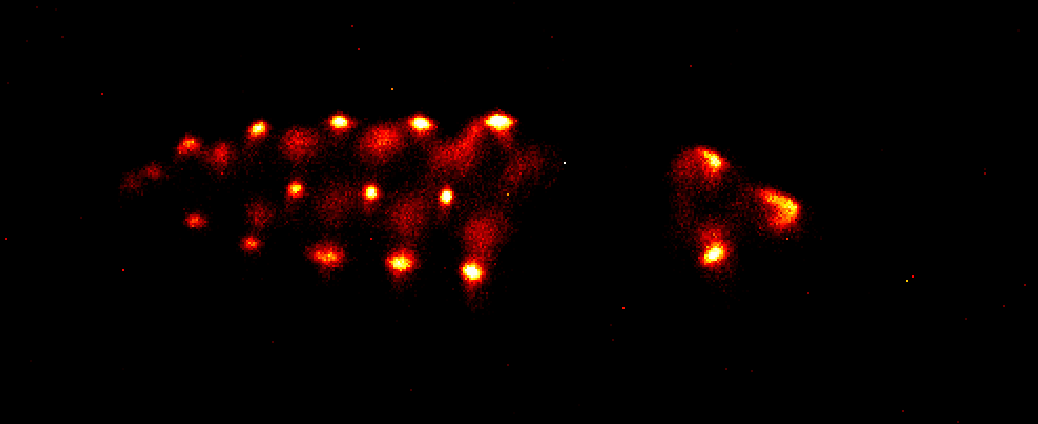
We did it! After months of careful preparation, we have successfully implanted an ion of Ar13+ into a Coulomb crystal of beryllium ions. Now the work begins to deterministically prepare a two-ion crystal of one HCI and one beryllium so that we can begin our search for the clock transition at 441 nm.
June 2018
We have finished commissioning of the beamline for the highly charged ions which delivers them from the EBIT to the main experimental chamber, and have observed them travelling through our cryogenic Paul trap. Now we must attempt to catch one as it travels through by switching a series of electrodes, and use a large Coulomb crystal of beryllium to dissipate the last bit of energy required before the HCI can be caught by the trap.
May 2018
The first tests of the beamline have been very successful. The fast highly charged ions are extracted from the EBIT, and their energy is reduced by a factor of five on the way to the experimental chamber. Their energy spread is also greatly reduced. However, they are still much too fast to be caught by our Paul trap, so an additional deceleration step using the trap itself is needed.
November 2017
An upgrade to our cryogenic supply line has resulted in a large reduction of the temperature of our ion trap region from 7 K to below 5 K. This will further reduce the background gas pressure in this region, increasing the potential storage time of the highly charged ions.
October 2017
We have successfully cooled a single trapped beryllium ion to the quantum mechanical ground state of one of its three degrees of freedom using stimulated Raman transitions. Once extended to a two-ion crystal of beryllium and a highly charged ion, this technique will allow quantum logic operations to be carried out.
September 2017
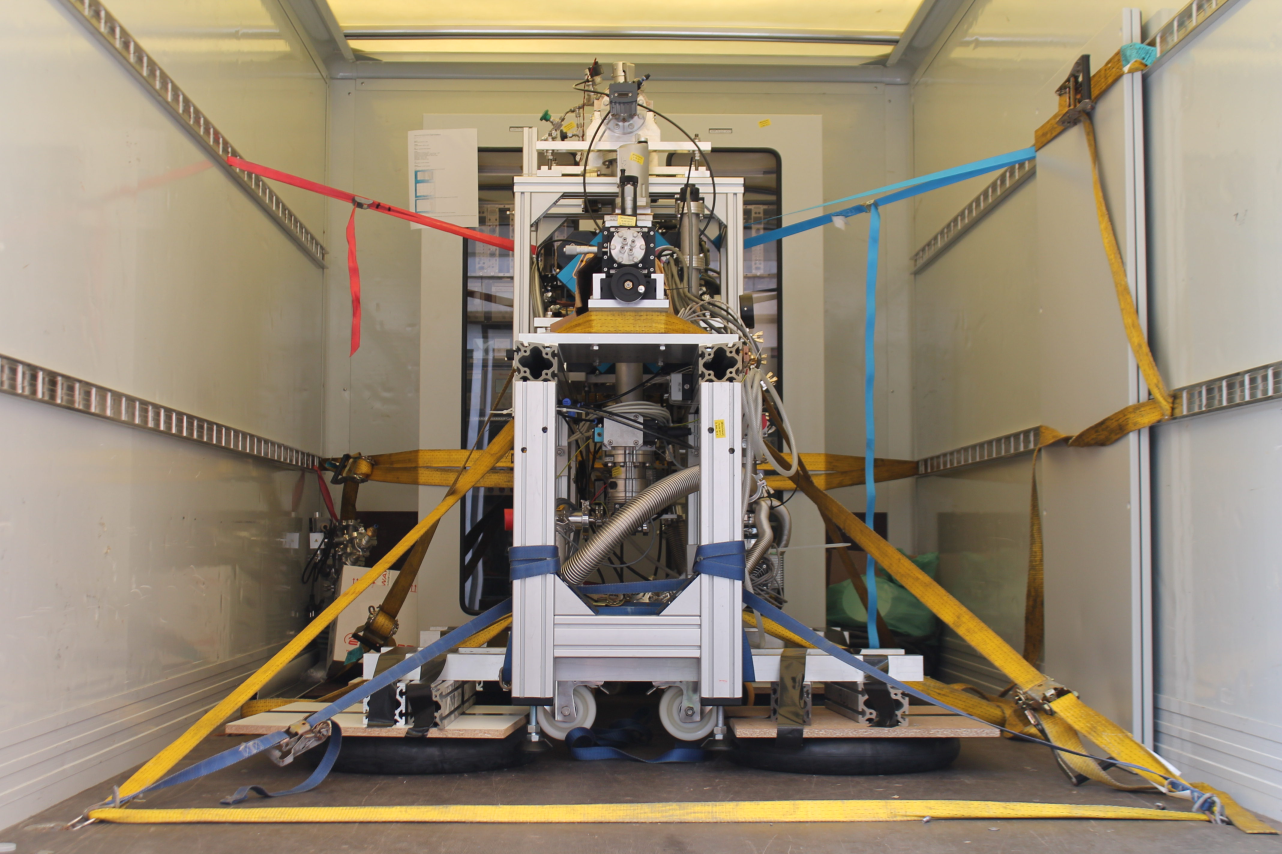
The EBIT is here! The electron beam ion trap that will be used to produce our highly charged ions has been safely transported to Braunschweig from the Max-Planck-Institute in Heidelberg, where it was assembled and tested.
August 2017
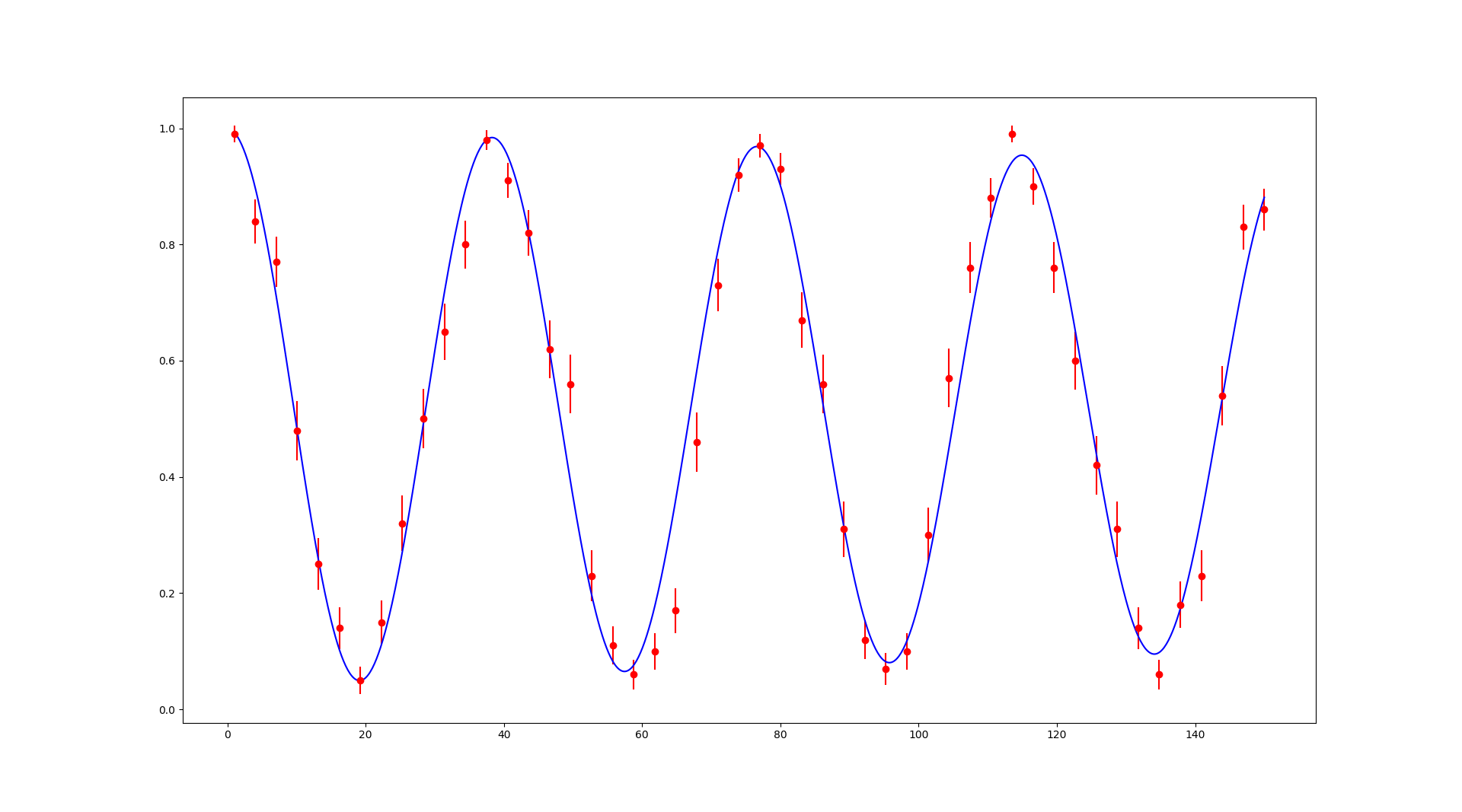
We have observed our first stimulated Raman transitions in a cold single ion, allowing us to coherently transfer population between the two hyperfine levels of the ground state in beryllium. This is a key milestone in the project, and paves the way to cooling of the ion to the ground state of its various motional modes and quantum logic operations.
June 2017
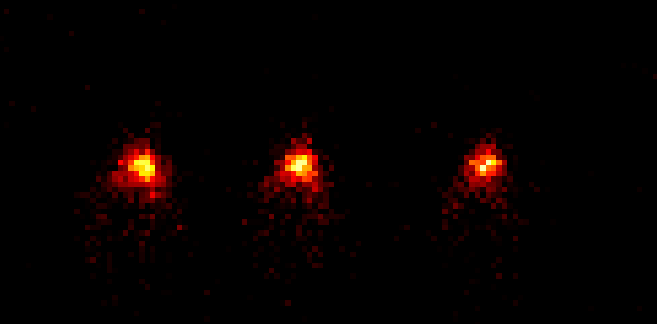
After cooling the cold stage and trap to 7 K (-266°C), we trapped our first beryllium ions. The ions are loaded into the trap via pulsed laser ablation of a beryllium wire, and single ions or large Coulomb crystals of ions can be loaded on-demand
April 2017
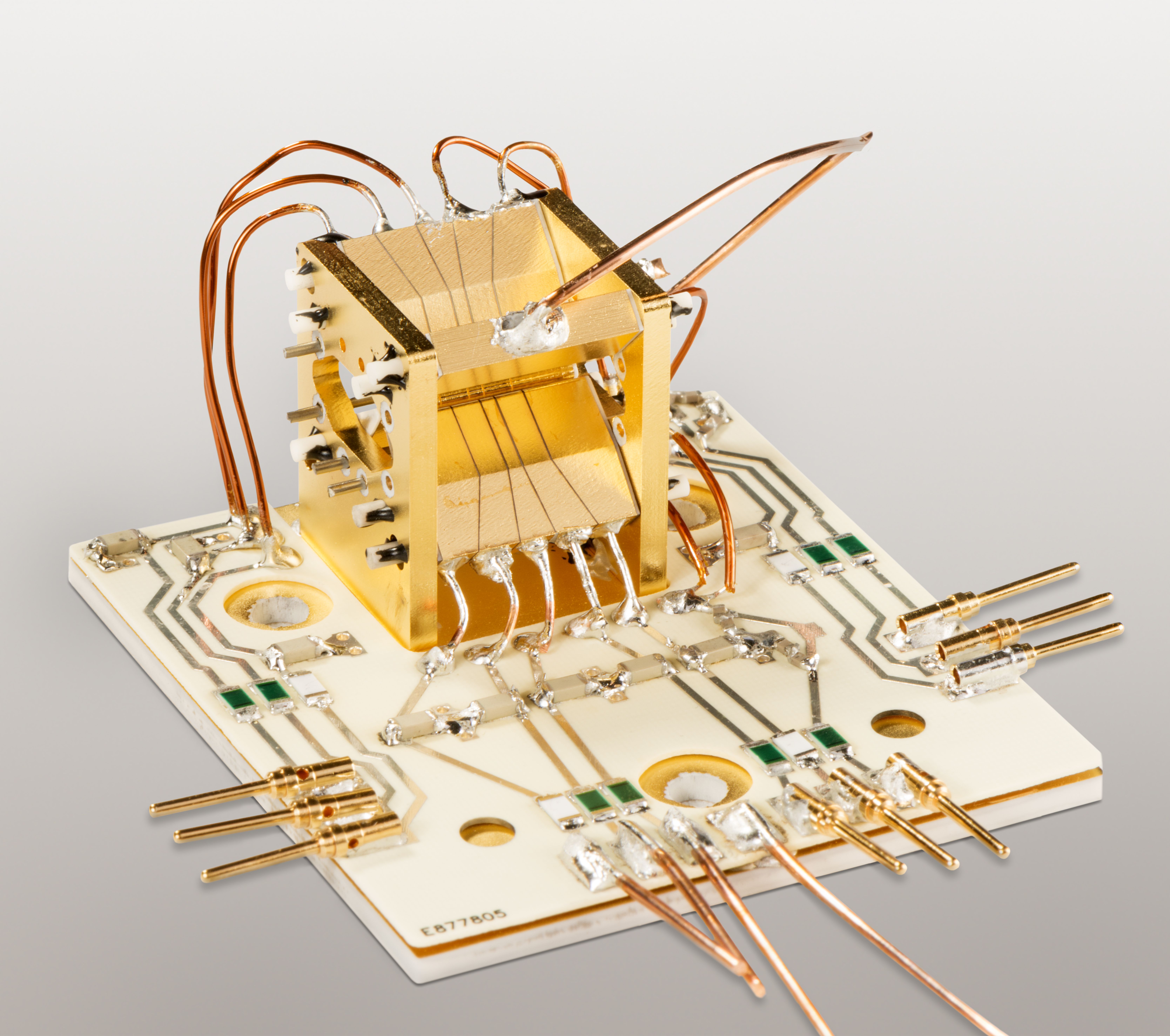
We have assembled our new cryogenic Paul trap, designed for trapping beryllium ions together with highly charged ions. The microstructured trap is made completely from gold-coated alumina (sintered Al2O3) to avoid any damage due to differential thermal contraction that would occur between different materials during cooldown to cryogenic temperatures.
The trap was assembled with high precision under an optical microscope in PTB's cleanroom facility, and was installed into the trap chamber almost without incident…..
August 2016
Publication in Applied Physics B: A tunable low-drift laser stabilized to an atomic reference
May 2016
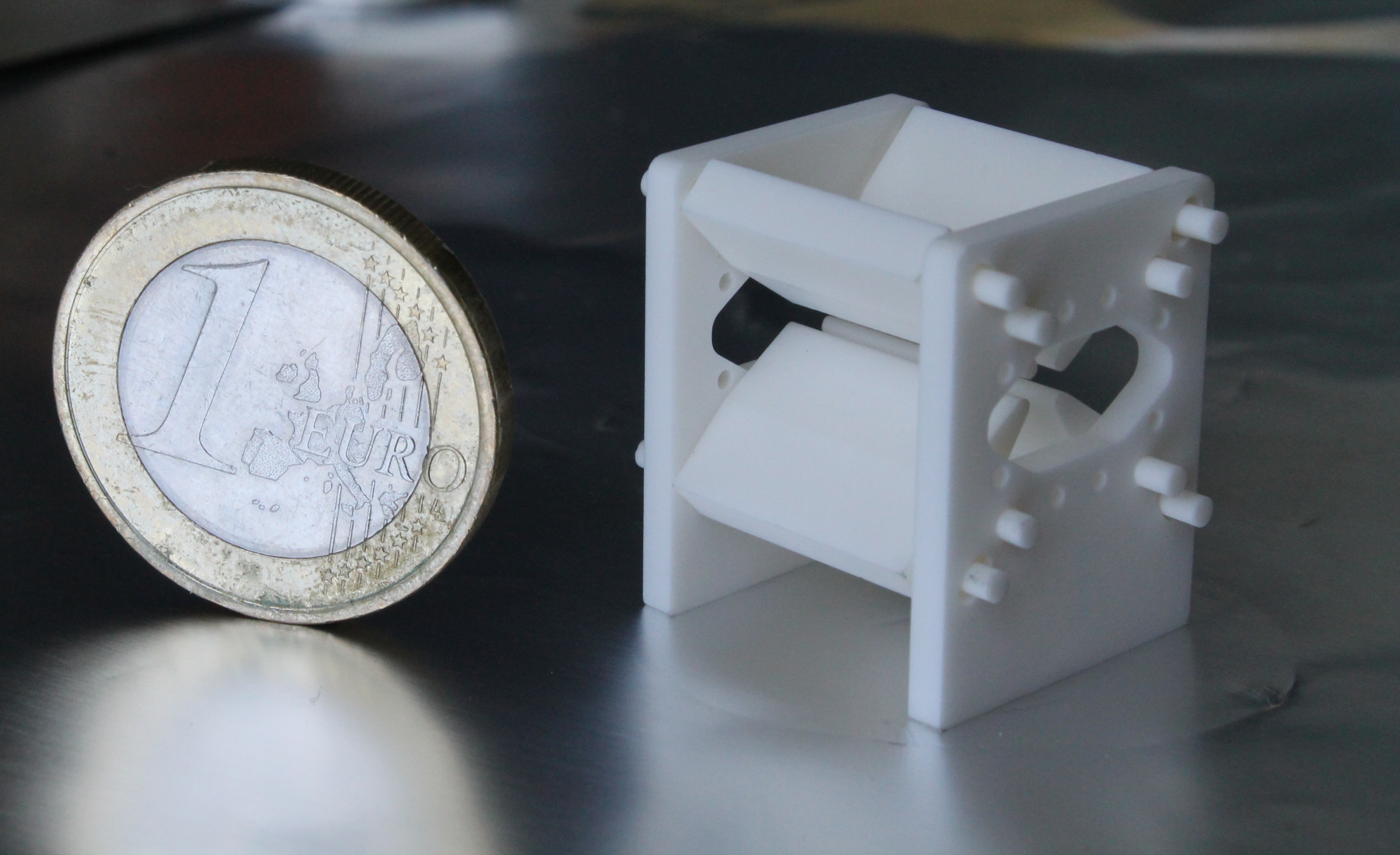
Our new ion trap just arrived! The body is manufactured of sintered alumina and will now be gold plated and post-processed to create segmented electrodes.
March 2016
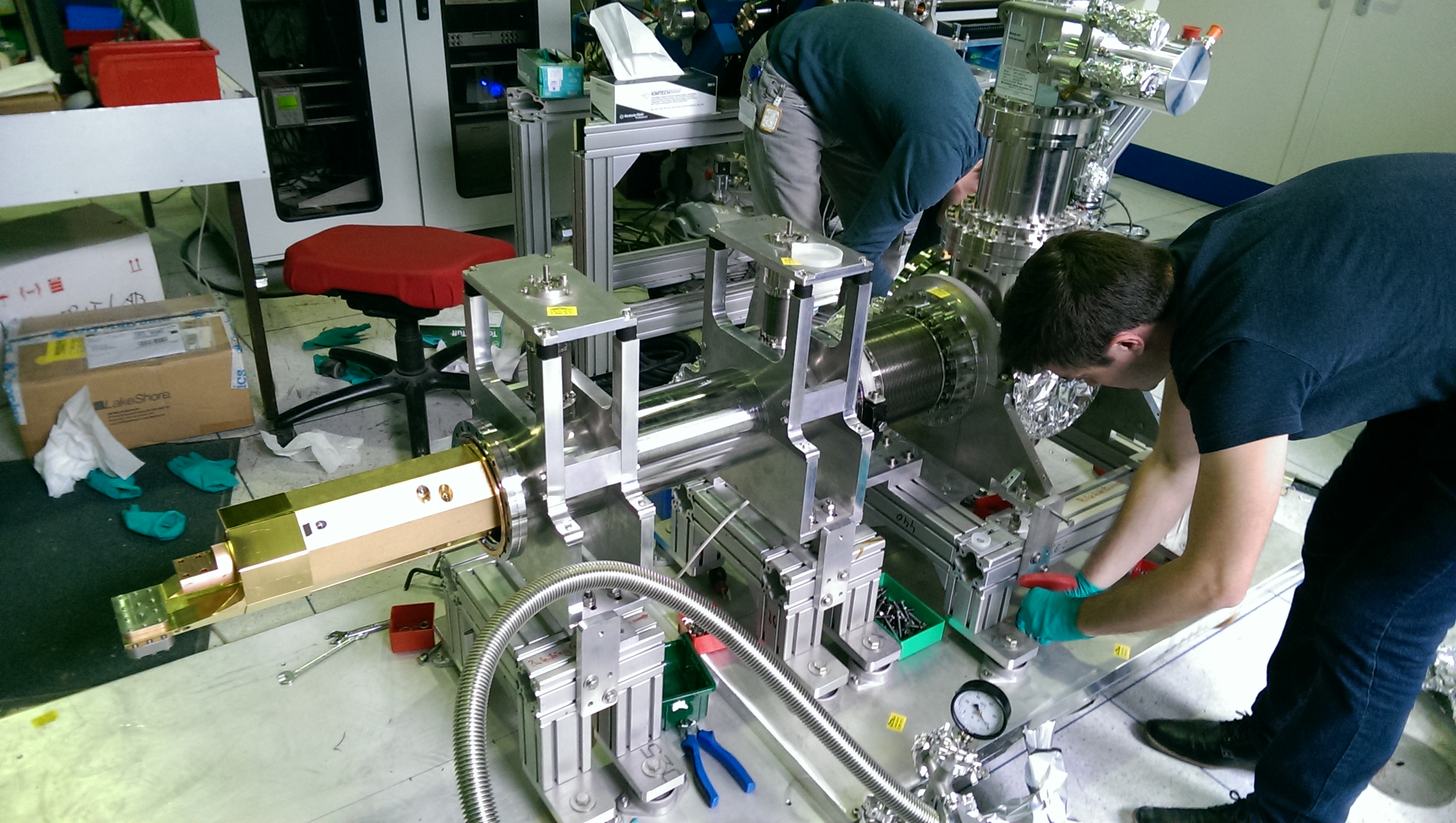
To store highly charged ions for a reasonable period of time without loss due to charge-exchange collisions, we require background gas pressures in the 10-14 mbar range. This can only be achieved in a cryogenic environment, however if the substantial vibrations associated with closed-cycle cryocoolers reach the ion trap they will cause line broadening and systematic perturbations to our optical clock transition via (special) relativistic time-dilation. To decouple the vibrations from the trap, a novel vibration-isolating cryogenic apparatus was recently completed at our collaborating institute, the Max-Planck-Institute for Nuclear Physics (MPIK). In March 2016, the apparatus was transported 450 km to our lab here in Braunschweig. Now that the system is in place, we will do comprehensive tests to make sure the vibration decoupling system performs as expected. Only then will we mount our ion trap and begin our initial spectroscopy on cold beryllium ions.

Figure: Massive inertial pendulum of the cryo system. This system provides a cryogenic environment in order to suppress charge exchange processes of the highly charged ions with residual gas combined with multiple vibration-suppression stages.
March 2016
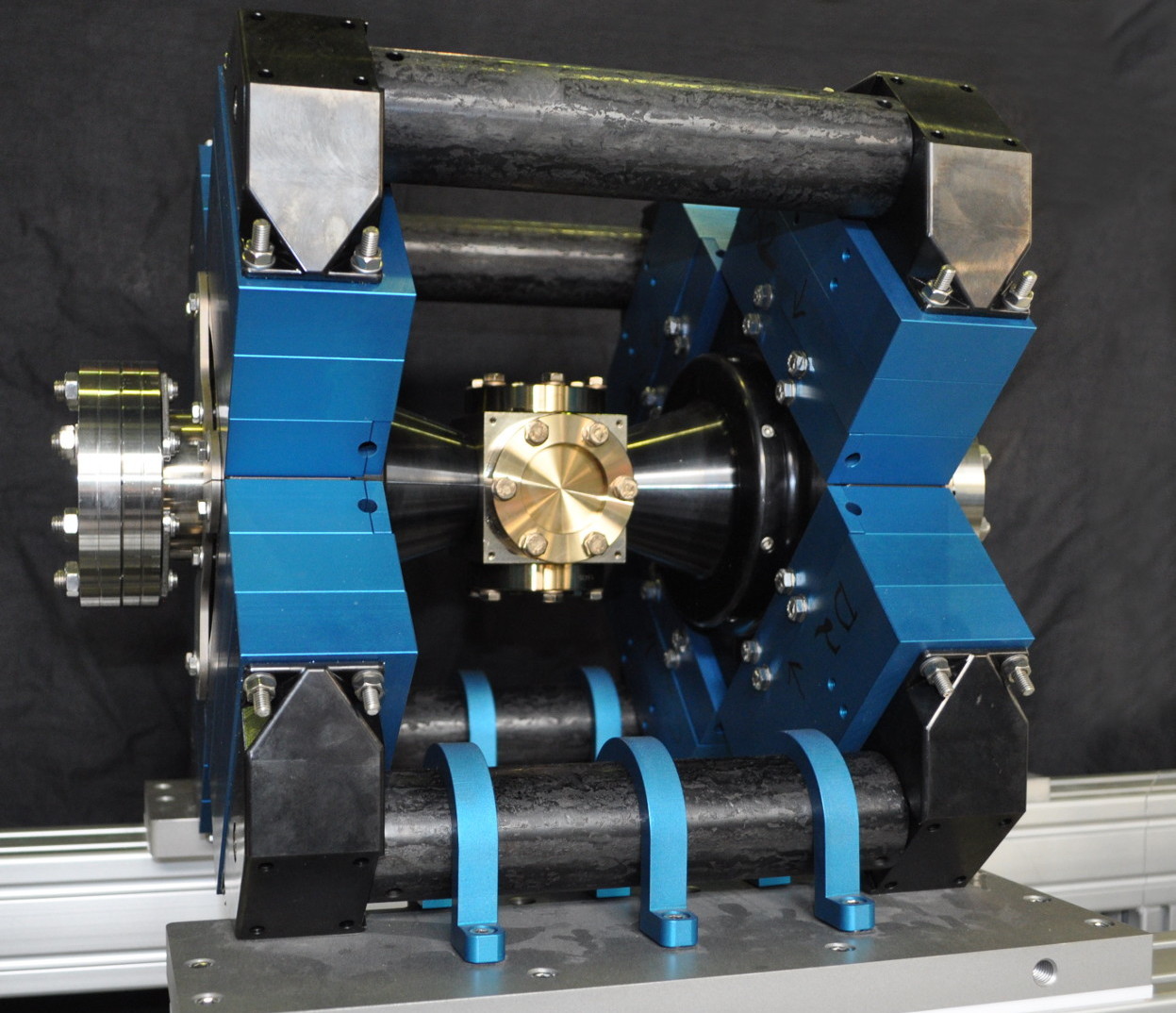
In many ion trapping laboratories today, the ions are produced by laser-induced photoionisation of neutral vapor of the atom of interest. Although this approach is convenient at low charge states, it is impractical for the production of highly charged ions as with each successive ionisation the remaining electrons are more tightly bound owing to the reduced screening of the nuclear charge. As such the ionisation potential rapidly increases and the photon required for further ionisation moves from the ultraviolet to the X-ray and even gamma ray regime, where convenient radiation sources are not yet available.
Another approach is to use a beam of electrons to ionise the atoms. This is the principle behind the electron beam ion trap (EBIT). Electrons emitted by a cathode are collimated by a powerful magnetic field (~1 tesla) and bombard the neutral atoms, removing electrons. The positively charged ions are then attracted to the electron beam, and thus confined and ionised further as they repeatedly cross the beam. In this way, it is possible to produce a charge state determined by the kinetic energy of the electrons, which can be over 100,000 eV (a typical UV photon used for photoionisation has an energy of only 3 eV). These energies are sufficient to strip away all of the electrons from heavy elements such as uranium, leaving behind the bare nucleus. Our requirements are somewhat more modest, we initially aim to remove thirteen of the eighteen electrons from an argon atom.
One drawback of the EBIT is the large magnetic fields required for the sufficient collimation of the electron beam. Such magnetic fields are often produced by superconducting Helmholtz coils, requiring a constant supply of liquid helium. Our design of EBIT utilises a special arrangement of strong permanent magnets to produce the necessary magnetic field, thus greatly reducing the complexity and power requirements of the experiment. This device has been designed and built as part of our collaboration with the Max-Planck-Institute for Nuclear Physics (MPIK). Our attention must now turn to the beamline that will guide our ions from the production site in the EBIT to our precision linear Paul trap in the adjacent laboratory.
